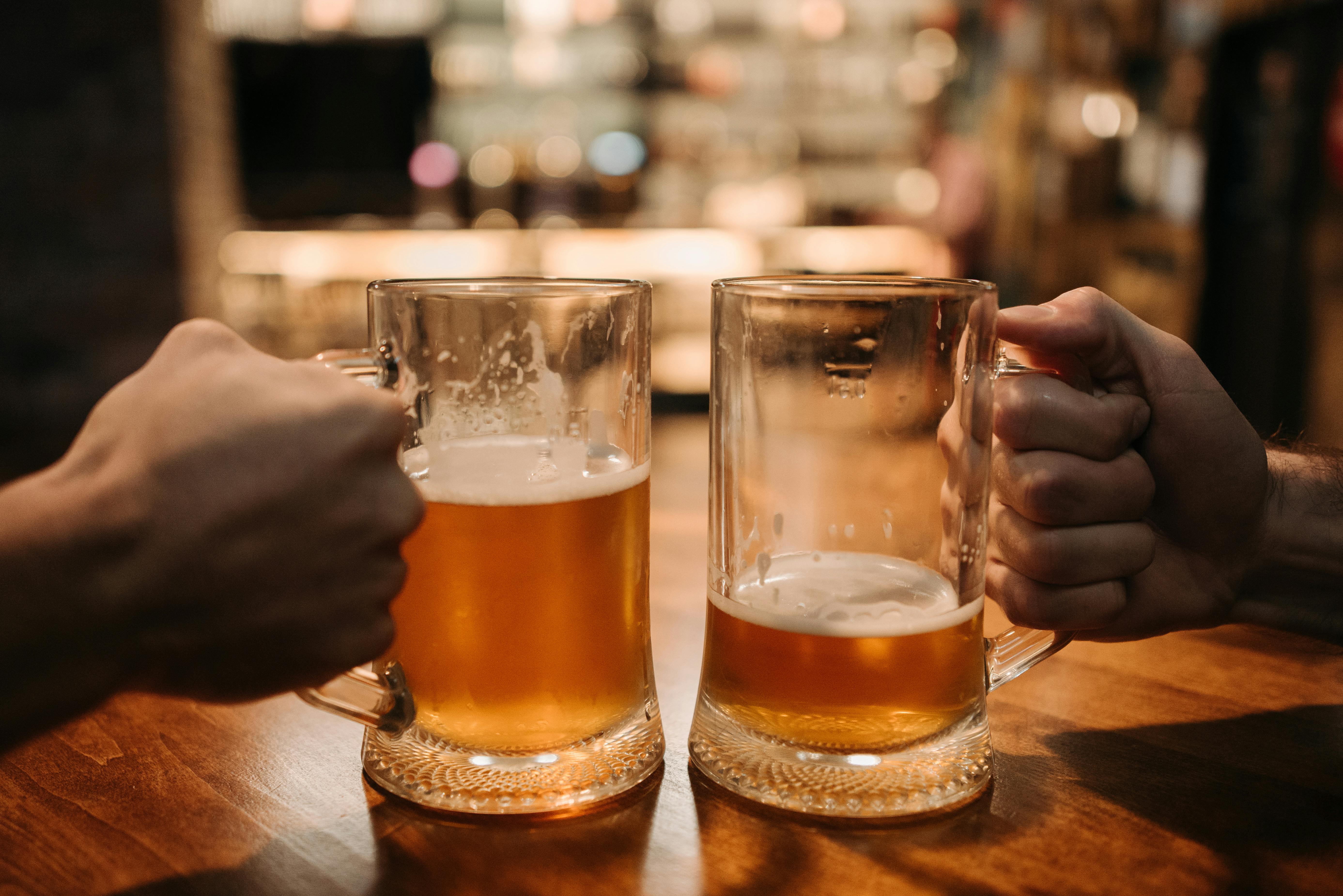Distillation in alcoholic beverages is a process that separates the components of a mixture based on their respective boiling points. It is used to purify and concentrate alcohol from fermented mixtures, such as wine, beer, or cider. This process involves heating the fermented mixture until the desired alcohol content is reached and then condensing the vapors back into liquid form. The distilled product will contain higher concentrations of ethanol than what was present in the original fermented mixture. Distillation is an important step in creating some of the world’s most popular alcoholic beverages, including whiskey, vodka, and brandy.Distillation in alcoholic beverages is a process of separating and purifying alcohol from a fermented substance such as wine, beer or cider. It involves boiling the mixture and then collecting the vapor, which is mostly alcohol, and condensing it into a liquid form. This purified liquid is known as distilled spirits.
How Does Distillation Work?
Distillation is a process used to separate mixtures of liquids based on their different boiling points. This process involves heating the mixture to its boiling point, which causes the components of the liquid to evaporate at different temperatures. The vapors are then collected and condensed back into a liquid form, resulting in a product that is free from impurities. The process of distillation is widely used in the production of alcoholic beverages, essential oils, and fuel.
The main components of the distillation process are evaporation and condensation. In order for evaporation to occur, heat must be applied to the liquid mixture. The temperature is increased until it reaches the boiling point of one or more components in the mixture. As this happens, those components will begin to evaporate into a vapor form that can be collected and cooled back down into a liquid state.
Once the vapor is collected it can be cooled down using a condenser which changes it from a gas back into a liquid form. This condensate then contains only the substances that have evaporated, meaning that they are now free from any impurities
Types of Distillation Processes Used in Alcohol Production
Distillation is one of the oldest methods used in alcohol production and is still widely used today. It is a process that involves heating a liquid to turn it into its vapor form, then cooling the vapor back down into liquid form. This process allows for the separation and purification of compounds from a mixture. There are several different types of distillation processes that are used in alcohol production, each with its own advantages and disadvantages.
The most common type of distillation process used in alcohol production is pot distillation. In pot distillation, the fermented liquid, or wash, is heated in a pot still where the vapors are collected and condensed back into liquid form. This method is relatively simple and can be done on a smaller scale than other types of distillation processes. It produces a lower-proof product compared to other methods, but it also retains more flavor from the original ingredients than other processes.
Another type of distillation process used in alcohol production is column distillation. In column distillation, the wash is heated and passes through columns filled with packing material which separates out different compounds
The History of Distillation for Alcoholic Beverages
Distillation has been used for many centuries to produce alcoholic beverages. The first recorded use of distillation was in 8th century Iraq, although it is believed to have been used prior in other parts of the world. The process quickly spread throughout the Middle East and Europe, and by the 11th century, distillation had become popular in many parts of the world.
The practice of distilling alcoholic beverages has changed greatly over time. Early distillers used primitive methods that often resulted in a low-proof, low-quality final product. As technology advanced, so did the art of distilling and by the 15th century, distillers were producing high-proof spirits such as brandy and whiskey.
Today, there are a variety of different types of stills used in modern distilleries. Each type produces a slightly different flavor profile depending on its design and materials used. Many modern distilleries are also experimenting with adding other ingredients such as fruits or herbs to their spirits to create unique flavor profiles.
Dist
Benefits of Distilling Alcoholic Beverages
Distilling alcoholic beverages has a number of benefits, one of which is its ability to increase the proof or strength of the liquor. This allows for a more concentrated flavor and a higher alcohol content, while reducing the amount of water used in the process. Furthermore, distillation can also remove undesirable compounds from the alcohol, making it smoother and more palatable for consumption. Additionally, distillation can help to improve the shelf-life of the alcohol by removing any bacteria or microorganisms that could cause spoilage. Finally, distilling can also provide a more cost-effective way to produce alcoholic beverages by reducing costs associated with fermentation and aging processes.
Overall, distilling alcoholic beverages has many advantages for both producers and consumers alike. By increasing the proof and removing any unwanted compounds, distillation can produce high-quality products that are smooth and enjoyable to drink without breaking the bank. Additionally, distillation helps to ensure that these products have a longer shelf-life and are not subject to spoilage due to bacterial growth. With all these benefits in mind, it’s no wonder why distillation has been such an important

Risks Associated with Distilling Alcoholic Beverages
Distilling alcoholic beverages can be a hazardous activity if done improperly. It involves the use of flammable materials, and can create dangerous vapors that may be harmful if inhaled. Additionally, the distillation process can create toxic by-products that may be hazardous to health if ingested. Distillation also requires special equipment and knowledge to ensure safety and quality control. Finally, the production of distilled alcohol without proper licensing is illegal in many countries and jurisdictions.
The most immediate danger associated with distilling alcohol is fire or explosion. Alcohol vapors are highly flammable, and any open flame or spark can cause an explosion or fire if contact is made with these vapors. To ensure safety, distillers should always work in a well-ventilated area where there are no sources of ignition, such as lighters or cigarettes. Additionally, all materials used in the distillation process should be stored away from any flame sources.
Inhalation of alcohol vapors can also be dangerous, as it can cause dizziness, nausea, and other adverse reactions. To avoid this
Mashing
The first step in the distillation process for alcoholic beverages is mashing. Mashing involves steeping grains in hot water to convert the starches into fermentable sugars. This process also extracts proteins and other compounds that can contribute to the flavor and mouthfeel of the finished product. The mash is then heated to boiling, which helps break down any remaining starches and enzymes. The resulting liquid, known as wort, is then cooled and transferred to a fermentation vessel.
Fermentation
The next step in the distillation process is fermentation. During this step, yeast is added to the wort and allowed to convert the fermentable sugars into alcohol and carbon dioxide gas. The fermentation process creates a wide range of flavors and aromas depending on the type of yeast used as well as other factors such as temperature and oxygen levels.
Distillation
Once fermentation is complete, the liquid must be distilled in order to increase its alcohol content and remove any unwanted by-products from the fermentation process. Distillation involves heating the liquid until it boils off, leaving behind a concentrated form of alcohol
Government Regulations Related to Distilling Alcoholic Beverages
Distilling alcoholic beverages is governed by a variety of government regulations. In the United States, these regulations are set forth by both federal and state governments. At the federal level, the Alcohol and Tobacco Tax and Trade Bureau (TTB) has authority over the production of spirits, including distilled alcohol. The TTB issues permits for distillers and oversees production activities, such as labeling and advertising. Additionally, the TTB establishes standards for acceptable products, such as minimum proof or alcohol content levels.
At the state level, laws vary widely regarding distilling alcoholic beverages. States may require permits for distillers to operate within their borders and regulate things like labeling, advertising, hours of operation, and taxes on products sold in-state. Many states also have specific requirements for equipment used in distillation operations as well as safety standards that must be met.
In addition to federal and state regulations, many local jurisdictions also have rules governing alcohol production within their boundaries. These can include zoning laws that restrict where a distillery can be located or limits on the amount of alcohol that

Conclusion
Distillation in alcoholic beverages is a process of purification that separates and concentrates the alcohol from the fermentation liquid. Distillation has been used for centuries as a way to make strong, high-quality alcoholic beverages that can be enjoyed responsibly. The process of fermentation and distillation can be used to make all kinds of spirits, including whiskey, vodka, gin, rum, and tequila. Each distilled spirit has its own unique flavor profile due to the differences in ingredients and processes used during production.
Distillation provides a safe way to enjoy alcoholic beverages without consuming unwanted toxins or impurities that may be present in the fermentation liquid. After distilling the alcohol, it can be aged for an extended period of time in order to further refine its flavor and character. Ultimately, distillation is an essential step in producing high-quality spirits that can provide an enjoyable experience when consumed responsibly.

